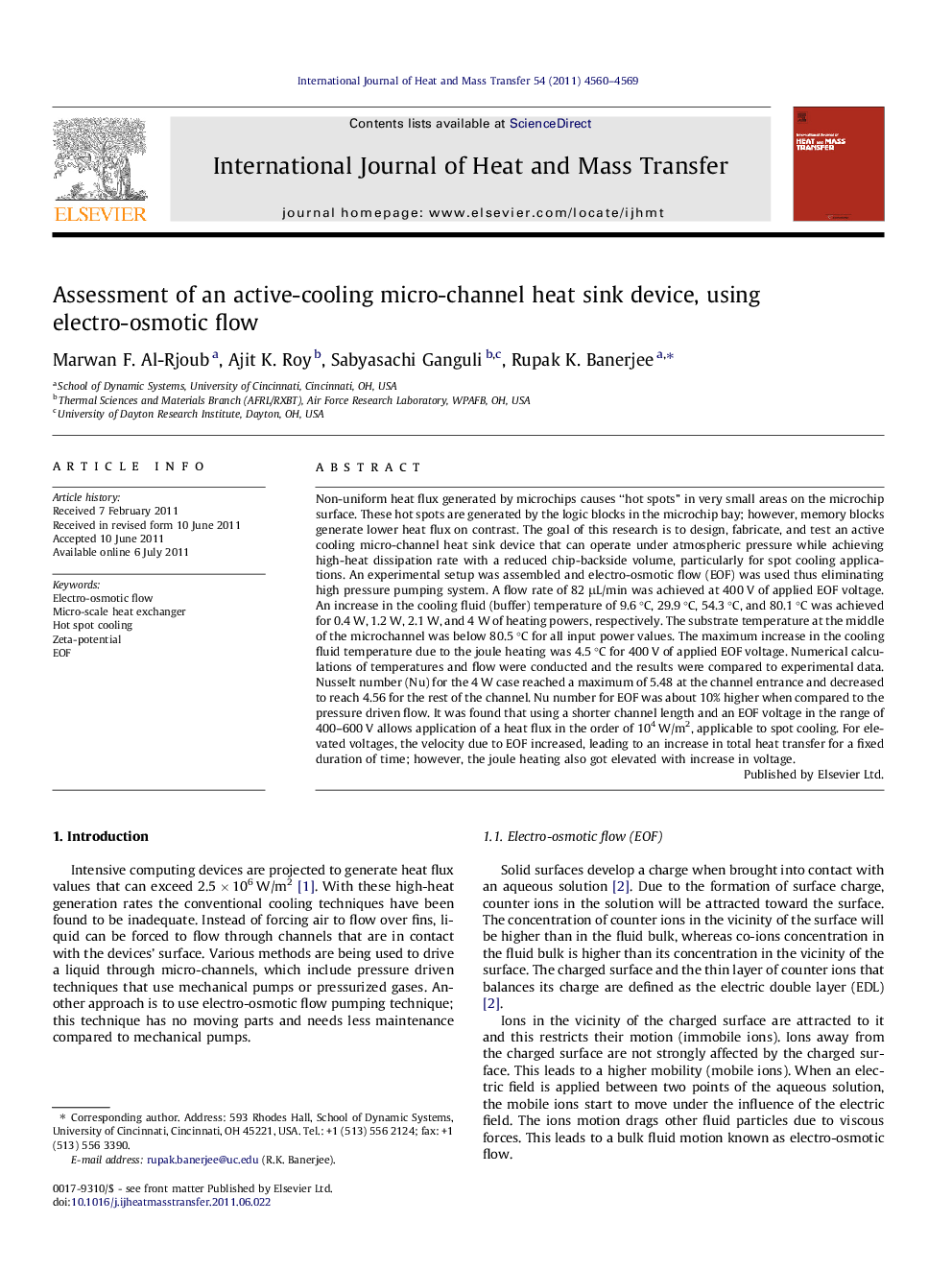| کد مقاله | کد نشریه | سال انتشار | مقاله انگلیسی | نسخه تمام متن |
|---|---|---|---|---|
| 659304 | 1644965 | 2011 | 10 صفحه PDF | دانلود رایگان |
عنوان انگلیسی مقاله ISI
Assessment of an active-cooling micro-channel heat sink device, using electro-osmotic flow
دانلود مقاله + سفارش ترجمه
دانلود مقاله ISI انگلیسی
رایگان برای ایرانیان
موضوعات مرتبط
مهندسی و علوم پایه
مهندسی شیمی
جریان سیال و فرایندهای انتقال
پیش نمایش صفحه اول مقاله

چکیده انگلیسی
Non-uniform heat flux generated by microchips causes “hot spots” in very small areas on the microchip surface. These hot spots are generated by the logic blocks in the microchip bay; however, memory blocks generate lower heat flux on contrast. The goal of this research is to design, fabricate, and test an active cooling micro-channel heat sink device that can operate under atmospheric pressure while achieving high-heat dissipation rate with a reduced chip-backside volume, particularly for spot cooling applications. An experimental setup was assembled and electro-osmotic flow (EOF) was used thus eliminating high pressure pumping system. A flow rate of 82 μL/min was achieved at 400 V of applied EOF voltage. An increase in the cooling fluid (buffer) temperature of 9.6 °C, 29.9 °C, 54.3 °C, and 80.1 °C was achieved for 0.4 W, 1.2 W, 2.1 W, and 4 W of heating powers, respectively. The substrate temperature at the middle of the microchannel was below 80.5 °C for all input power values. The maximum increase in the cooling fluid temperature due to the joule heating was 4.5 °C for 400 V of applied EOF voltage. Numerical calculations of temperatures and flow were conducted and the results were compared to experimental data. Nusselt number (Nu) for the 4 W case reached a maximum of 5.48 at the channel entrance and decreased to reach 4.56 for the rest of the channel. Nu number for EOF was about 10% higher when compared to the pressure driven flow. It was found that using a shorter channel length and an EOF voltage in the range of 400-600 V allows application of a heat flux in the order of 104 W/m2, applicable to spot cooling. For elevated voltages, the velocity due to EOF increased, leading to an increase in total heat transfer for a fixed duration of time; however, the joule heating also got elevated with increase in voltage.
ناشر
Database: Elsevier - ScienceDirect (ساینس دایرکت)
Journal: International Journal of Heat and Mass Transfer - Volume 54, Issues 21â22, October 2011, Pages 4560-4569
Journal: International Journal of Heat and Mass Transfer - Volume 54, Issues 21â22, October 2011, Pages 4560-4569
نویسندگان
Marwan F. Al-Rjoub, Ajit K. Roy, Sabyasachi Ganguli, Rupak K. Banerjee,